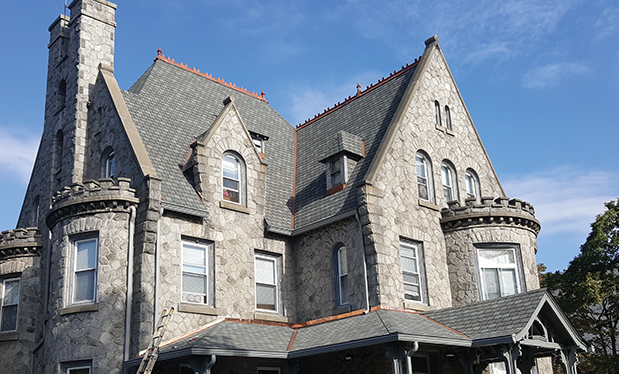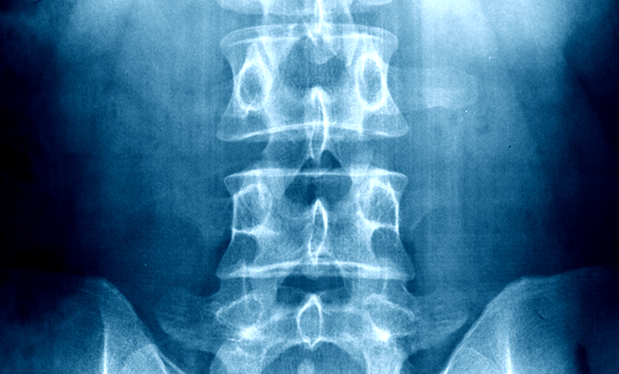Editor's note: Following is part two of a two-part series addressing building codes. Part one appeared in the December 2017 issue.
The International Code Council® (ICC), promulgator of the International Residential Code,® International Existing Building Code® and other related international codes, recently updated and published revised editions of its model codes, known as the "I-Codes," as part of its normal three-year update cycle.
In part one of this two-part series, I reviewed the more significant roofing-related changes to the International Building Code,® International Energy Conservation Code,® International Fire Code® and International Plumbing Code.® Part two addresses the significant roofing-related changes to the International Residential Code and International Existing Building Code.
IRC 2018
The International Residential Code for One- and Two-Family Dwellings, 2018 edition (IRC 2018) applies to detached one- and two-family dwellings and multiple single-family dwellings not more than three stories above grade plane though jurisdictions make the final determination as part of the adoption process.
As with the International Building Code, 2018 Edition (IBC 2018), ASCE Standard 7-16, "Minimum Design Loads and Associated Criteria for Buildings and Other Structures," was accepted and appears in Chapter 44—Referenced Standards, but many proposed changes that correlate to IRC 2018's roofing-related code sections with ASCE 7-16 were not approved by ICC voting members.
For example, ASCE 7-16 wind speed maps and roof pressure loading were not adopted and remain as they were for IRC's 2015 edition that references ASCE 7-10. As a result, IRC 2018 is inconsistent with IBC 2018 regarding wind design for roof assemblies. NRCA recommends roof system designers coordinate with local building code officials and roofing material manufacturers to ensure roof assembly wind design methods are consistent with jurisdictional requirements.
Several terms and definitions relevant to roof assemblies have been added or revised in Chapter 2—Definitions, including the terms BIPV roof panel, repair, roof assembly, roof coating, skylights and sloped glazing. The definitions for these terms generally are consistent with those understood in the roofing industry.
A majority of IRC 2018's roofing-related requirements appear in Chapter 9—Roof Assemblies.
Section R902.4, "Rooftop-mounted Photovoltaic Panel Systems" (formerly "Rooftop-mounted Photovoltaic Panels and Modules"), requires photovoltaic (PV) panel systems installed on roofs be tested, listed and identified with a fire classification in accordance with two UL standards: UL 1703, "Standard for Flat-Plate Photovoltaic Modules and Panels," and UL 2703, "Standard for Mounting Systems, Mounting Devices, Clamping/Retention Devices, and Ground Lugs for Use with Flat-Plate Photovoltaic Modules and Panels."
UL 1703 was referenced in the previous IRC edition, but UL 2703 is a new reference for IRC 2018. The section requires Class A, B or C PV panel systems and modules be installed per jurisdictional provisions or where a roof edge is less than 3 feet from a lot line.
Section R905.1.1—Underlayment has been updated to include requirements for PV shingles. Underlayment complying with ASTM D4869, "Standard Specification for Asphalt-Saturated Organic Felt Underlayment Used in Steep Slope Roofing," Type III has been added to Table R905.1.1(1)—Underlayment Types and now is acceptable in areas with a maximum ultimate design wind speed, Vult = 140 mph. Also, an additional alternative method for underlayment installation has been added as exception three in Section R905.1.1, and side and end lap provisions have been added in Tables R905.1.1(2)—Underlayment Application and R905.1.1(3)—Underlayment Attachment.
Subsection R905.11.2.1—Base Sheet has been added and identifies three options for base sheets: a sheet that complies with IBC 2018's Section 1507.11.2—Material Standards, ASTM D1970, "Standard Specification for Self-Adhering Polymer Modified Bituminous Sheet Materials Used as Steep Roofing Underlayment for Ice Dam Protection," or ASTM D4601, "Standard Specification for Asphalt-Coated Glass Fiber Base Sheet Used in Roofing."
Section R905.17—Building-integrated Photovoltaic (BIPV) Roof Panels Applied Directly to the Roof Deck is new and includes requirements for deck, deck slope, underlayment, ice barrier, material standards, attachment and wind resistance.
In Section R906—Roof Insulation, mineral wool board was added to Table R906.2—Material Standards for Roof Insulation. The listing for mineral wool board references ASTM C726, "Standard Specification for Mineral Wool Roof Insulation Board."
In Section R907—Rooftop-Mounted Photovoltaic Systems, most of the information formerly located in this section has been moved to Section R324—Solar Energy Systems—what remains is a reference to Section R324 and a provision that rooftop-mounted PV systems also be designed and installed in accordance with NFPA (National Fire Protection Association) Standard 70, "National Electrical Code.® "Information formerly located in Section R909—Rooftop-mounted Photovoltaic Panel Systems has been moved to Section R324; Section R909 does not appear in IRC 2018.
Section R324 contains subsection R324.4—Rooftop-mounted Photovoltaic Systems. The revised structural requirements include new, specific roof load requirements in Section R324.4.1.1—Roof Load. This section indicates portions of roof structures not covered with photovoltaic panel systems shall be designed for dead loads and roof loads in accordance with Sections R301.4—Dead Load and R301.6—Roof Load. Portions of roof structures covered with PV panel systems shall be designed for the following two specific load cases:
- Dead load (including PV panel weight) plus snow load in accordance with Table R301.2(1)—Climatic and Geographic Design Criteria
- Dead load (excluding PV panel weight) plus roof live load or snow load, whichever is greater, in accordance with Section R301.6—Roof Load
Additionally, Section R324.4.1.2—Wind Load has been updated. Added to the requirements for rooftop-mounted PV panel or module systems to be designed and installed to resist the component and cladding loads specified in Table R301.2(2)—Component and Cladding Loads is the supports for such systems are to be included in wind load calculations. In situations where structural loads are to be determined, roof system designers should consider consulting with structural professionals.
Also, Subsection R324.6—Roof Access and Pathways has been updated. Requirements for pathways, setbacks at ridges, and panel and module locations in relation to emergency escape and rescue openings have been revised.
Section R908.3.1—Roof Recover includes a new subsection indicating roof coatings shall be permitted without tearing off existing roof coverings. Identified substrates where such roof coatings may be installed as a re-cover include an existing roof coating; metal roof panels or shingles; mineral-surfaced roll roofing; built-up roofing; polymer-modified bitumen roofing; thermoset and thermoplastic single-ply roofing; and SPF roofing.
Chapter 8—Roof-Ceiling Construction, Section R806—Roof Ventilation also contains revised roofing-related requirements.
In Section R806.1—Ventilation Required, perforated vinyl has been added for providing ventilation openings into attic spaces. Other methods remain unchanged from the code's previous edition and include corrosion-resistant wire cloth screening and hardware cloth.
In Section R806.2—Minimum Vent Area, the conditions for when a minimum attic vent area can be reduced have been made more stringent by requiring both listed conditions be met (the previous version required only one condition be met). Additionally, the wording of exception two related to the placement of attic ventilators was revised to make clear that 50 to 60 percent of ventilation must occur in the lower third of attic spaces as part of the conditions for reducing the minimum required vent area.
In Section R806.5—Unvented Attic and Unvented Enclosed Rafter Assemblies, a new subsection was added that applies to air-permeable insulation installed in unvented attics in climate zones 1, 2 and 3. The new requirements address the use of vapor diffusion ports, roof slope, insulation placement and air flow rate.
IRC 2018 also contains changes that indirectly apply to roof system design. Section P3103.1—Vent Pipes Terminating Outdoors (formerly Roof Extension) has been expanded. Added in Section P3103.1—Vent Pipes Terminating Outdoors are alternative requirements for vent pipes in certain situations. Longer exposed vent pipe dimensions are required for some roofs used for recreational purposes (see Section P3103.1.2—Roof Used for Recreational Purposes), and shorter exposed vent pipe dimensions are allowed in some situations where the vent will be shielded by another element such as a solar collector or a decorative shroud (see Section P3101.1.3—Roof Extension Covered).
IEBC 2018
The International Existing Building Code, 2018 Edition (IEBC 2018) applies to the repair, alteration, change of occupancy, addition and relocation of existing buildings except detached one- and two-family dwellings and multiple single-family dwellings not more than three stories above grade plane though jurisdictions make the final determination as part of the adoption process.
Several terms and definitions relevant to roof assemblies have been added or revised in Chapter 2—Definitions, including the terms building, existing structure, roof coating and roof repair. The definitions for these terms generally are consistent with those understood in the roofing industry.
A majority of IEBC 2018's roofing-related requirements appear in Chapter 7—Alterations—Level 1.
A level 1 alteration includes the removal and replacement or the covering of existing materials, elements, equipment or fixtures using new materials, elements, equipment or fixtures that serve the same purpose. Roof replacement and roof re-cover specifically are addressed in Chapter 7.
Section 705—Reroofing (formerly Section 706) has been reorganized and revised to closely align with IBC 2018's Section 1511—Reroofing.
Section 706.2—Addition or Replacement of Roofing or Replacement of Equipment has been revised and now requires any existing gravity load-carrying structural element for which an alteration causes an increase in a roof design's dead, live or snow load, including snow drift effects, of more than 5 percent shall be replaced or altered as needed to carry the gravity loads required by IBC for new structures. The new requirements are more general in nature than the more roofing-specific text in the previous IEBC edition and include an exception for some residential buildings. In situations where loads may be increased, roof system designers should consider consulting with structural professionals to determine how to demonstrate compliance with Section 706.2 provisions.
IEBC also includes provisions for level 2 and 3 alterations (more substantial construction than would be part of a typical roof replacement or re-cover project). For level 2 and 3 alterations, IEBC 2018 also requires compliance with level 1 alterations.
Begin preparing
With the publication of the 2018 I-Codes, you should begin preparing for the codes' adoptions in the areas in which you work. ICC intends for the most recent I-Codes to be adopted by jurisdictions beginning this month.
Jason Wilen, AIA, CDT, RRO, is an NRCA director of technical services.
The new I-Codes
The 2018 editions of the I-Codes include the following:
- International Building Code®
- International Code Council Performance Code® for Buildings and Facilities
- International Energy Conservation Code®
- International Existing Building Code®
- International Fire Code®
- International Fuel Gas Code®
- International Green Construction Code®
- International Mechanical Code®
- International Plumbing Code®
- International Private Sewage Disposal Code®
- International Property Maintenance Code®
- International Residential Code® for One- and Two-Family Dwellings
- International Swimming Pool and Spa Code™
- International Wildland-Urban Interface Code®
- International Zoning Code®
The 2018 editions of the I-Codes are available from the International Code Council at (800) 786-4452 or www.iccsafe.org. All I-Codes now are available except the 2018 International Green Construction Code, which is scheduled to be released during the first quarter of 2018 and, for the first time, will feature technical content based on ASHRAE 189.1, "Standard for the Design of High-Performance Green Buildings."
Withdrawn text
The following sections have been removed from the International Residential Code® for One- and Two-Family Dwellings, 2018 edition because the standards have been withdrawn by the Canadian General Standards Board (CGSB).
Section R905.11—Modified Bitumen Roofing, CGSB Standard 37-GP-56M, "Membrane, Modified, Bituminous, Prefabricated, and Reinforced for Roofing," has been removed from Table R905.11.2—Modified Bitumen Roofing Material Standards.
Section R905.12—Thermoset Single-ply Roofing, CGSB Standard 37-GP-52M, "Roofing and Waterproofing Membrane, Sheet Applied, Elastomeric," has been removed from Subsection R905.12.2—Material Standards.
Section R905.13—Thermoplastic Single-ply Roofing, CGSB CAN/SGSB Standard 37.54, "Polyvinyl Chloride Roofing and Waterproofing Membrane," has been removed from Subsection R905.13.2—Material Standards.
Related content:
Part one of "Keeping an eye on I-Codes" addresses roofing-related changes to the International Building Code,® International Energy Conservation Code,® International Fire Code® and International Plumbing Code®; it was published in the December 2017 issue.



